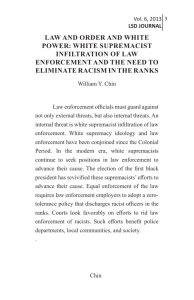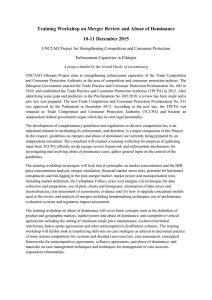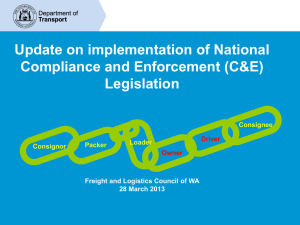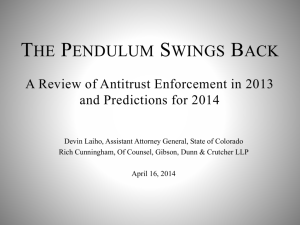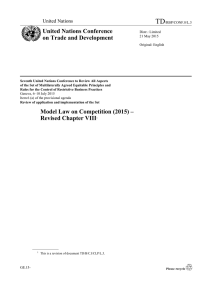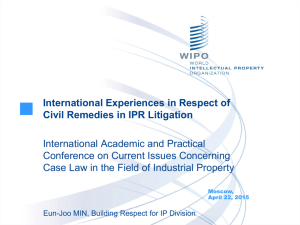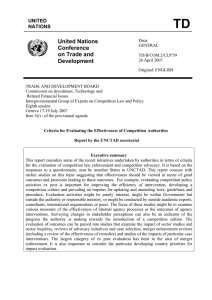Shelanski - Silicon Flatirons
advertisement
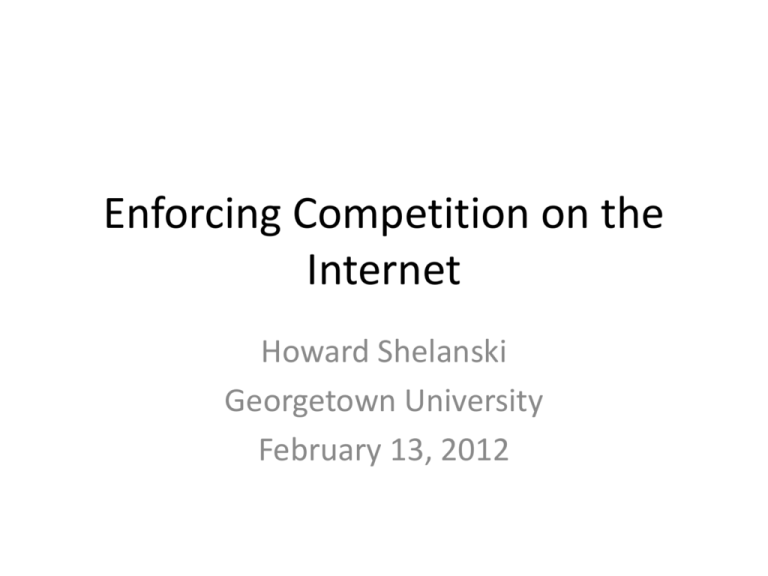
Enforcing Competition on the Internet Howard Shelanski Georgetown University February 13, 2012 The Problem • As on-line services become more essential to everyday life dominance on the Internet becomes an increasing public policy focus • Even as firms provide consumers with newer and better services, there is concern about conduct that might impede the arrival of yet more innovative and diverse offerings Digital “Platforms” are a Particular Challenge • “Platforms” are products or services whose value to consumers is, or is greatly enhanced by, their provision of access to complementary products or services. – They may have multiple, inter-related constituencies: e.g. end users on one side, and complementary products on the other. The Concerns • Platforms can “tip” toward dominance because of network effects, scale effects, or both. • Platforms may try to leverage their dominance into one level into dominance in complementary markets • Platforms may act anticompetitively in complementary markets to protect their platform monopolies A Role for Enforcement . . . • Government competition enforcement has a place in complex, dynamic markets – Microsoft – Intel – Merger enforcement (Thoratec/HeartWare; Google/ITA) • Focus here on monopolization cases But an Increasingly Difficult One . . . • Identifying violations is especially difficult in “digital” marketplaces. • Articulating remedies is especially difficult for digital services The principal challenge is not doctrinal, but practical • Distinguishing competitive strategy from engineering decisions is particularly difficult – Is an algorithmic change designed to yield better search results or drop rivals from those results? • Distinguishing technical integration from economic discrimination is especially difficult – Is the better interoperability with a proprietary complement due to improved internal technology or degraded external interfaces? – Are limits on external interfaces designed to preserve technological integrity or harm competition? Ambiguous Effects Make Remedies Difficult • What will an agency or court tell the monopolist it cannot do? • Remedies almost always have tradeoffs: much conduct that is on balance anticompetitive has something on the benefit side of the scale • This is particularly true for digital goods Two Relevant lines of competition policy • The efficiency strand: conduct that furthers innovation and integration is presumptively valid, and the presumption is very difficult to rebut. • The property-rights strand: firms have wide latitude to refuse to deal with rivals and to vertically discriminate. Implications • These Different Policy Strands Suggest a Difference Between Anti-Monopoly Enforcement and Merger Enforcement – The ambiguities of some conduct on the Internet make anti-monopoly enforcement where firms have entered on their own less feasible and possibly less desirable – The fact that once a firm owns a complementary business it will be harder to police its actions to favor that business means entry by acquisition should be more strictly scrutinized. • Renewed emphasis on vertical mergers Moving Beyond the Sherman Act • Increased difficulty of using Section 2 in the digital world opens doors to other options – Prescriptive regulation • But problems well known and costs likely to be high – Ex post enforcement by the FTC under Section 5 • Promising, but limiting principles still to be developed Conclusions • Antitrust enforcement under Section 2 • Merger enforcement under Section 7 • FTC enforcement under Section 5 ? • Public enforcement role greater than private


